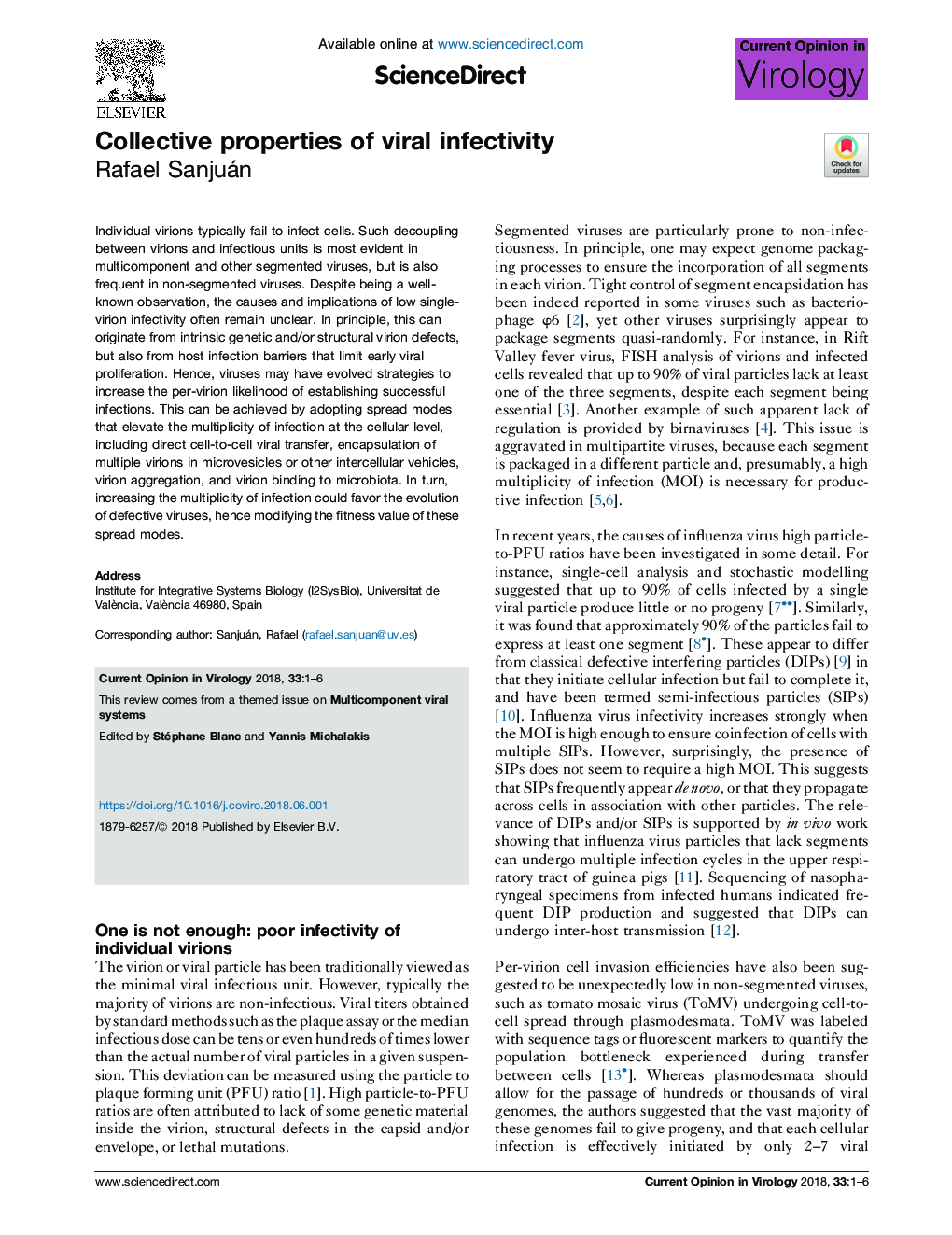| کد مقاله | کد نشریه | سال انتشار | مقاله انگلیسی | نسخه تمام متن |
|---|---|---|---|---|
| 8506448 | 1555893 | 2018 | 6 صفحه PDF | دانلود رایگان |
عنوان انگلیسی مقاله ISI
Collective properties of viral infectivity
ترجمه فارسی عنوان
خواص کلیدی عفونت ویروسی
دانلود مقاله + سفارش ترجمه
دانلود مقاله ISI انگلیسی
رایگان برای ایرانیان
موضوعات مرتبط
علوم زیستی و بیوفناوری
ایمنی شناسی و میکروب شناسی
ویروس شناسی
چکیده انگلیسی
Individual virions typically fail to infect cells. Such decoupling between virions and infectious units is most evident in multicomponent and other segmented viruses, but is also frequent in non-segmented viruses. Despite being a well-known observation, the causes and implications of low single-virion infectivity often remain unclear. In principle, this can originate from intrinsic genetic and/or structural virion defects, but also from host infection barriers that limit early viral proliferation. Hence, viruses may have evolved strategies to increase the per-virion likelihood of establishing successful infections. This can be achieved by adopting spread modes that elevate the multiplicity of infection at the cellular level, including direct cell-to-cell viral transfer, encapsulation of multiple virions in microvesicles or other intercellular vehicles, virion aggregation, and virion binding to microbiota. In turn, increasing the multiplicity of infection could favor the evolution of defective viruses, hence modifying the fitness value of these spread modes.
ناشر
Database: Elsevier - ScienceDirect (ساینس دایرکت)
Journal: Current Opinion in Virology - Volume 33, December 2018, Pages 1-6
Journal: Current Opinion in Virology - Volume 33, December 2018, Pages 1-6
نویسندگان
Rafael Sanjuán,
